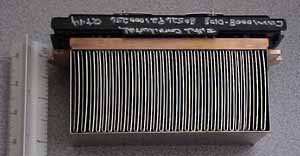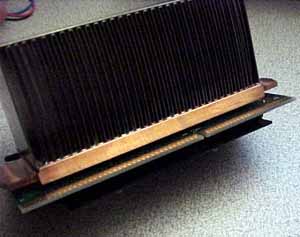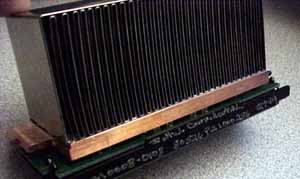On the day of the launch of the 1GHz Athlon, AMD’s lead partners, Compaq and Gateway, began offering systems based on the newly released CPU. The Gateway Select 1000 and the Compaq Presario 5900Z will be available with a 1GHz Athlon CPU for under $3000 effective, if not immediately, then by the time this publication reaches your screen. How does Intel plan on responding?
Three of Intel’s premier partners, Dell, HP, and IBM, will be releasing systems based on the Pentium III clocked at 1GHz with the announcement of the CPU, and like systems based on the 1GHz Athlon, these systems will be available in limited quantities, but they will be available for purchase.
Now, here’s where things get weird: because Intel pushed for the early announcement of their 1GHz part and didn’t want to disturb the rest of their roadmap, they currently have no CPUs faster than 800MHz but slower than 1GHz. The 8xx and 9xx chips are due out in a couple of weeks, but until then the next option above a Pentium III 800 from Intel is a Pentium III 1GHz.
In terms of general availability, Intel is sticking to their roadmap for general availability of the 1GHz parts. You won’t see any 1GHz parts, outside of those included in systems by Dell, HP, and IBM, until Q3 of this year, meaning that AMD will most likely get a head start on Intel in terms of shipping 1GHz parts to the general public (that includes all of us).
As we mentioned at the start of this review, Intel had to increase the core voltage of the Pentium III by about 3% in order to maintain high enough yields on the 1GHz parts. AMD had to do the same thing with their 1GHz Athlon which now runs at 1.80v instead of the 1.70v that the Athlon 850 ran at or the 1.60v that all other Athlons operate at.
In addition to increasing the core voltage from 1.65v to 1.70v, Intel also had to take care of the additional heat generated by the Pentium III running at 1GHz. Dell, HP, and IBM will be using noticeably larger heatsinks in their 1GHz boxes, an example of which is the heatsink that our 1GHz sample was outfitted with.
The heatsink featured a copper base and an increased fin surface area from what we’re used to seeing on heatsinks Intel uses on their CPUs. AMD did the same thing with the 1GHz Athlon sample they provided us. The Athlon at 1GHz is already producing 50W of heat, and while the 1GHz Pentium III should be lower than that, we are still talking about a considerable amount of heat.













0 Comments
View All Comments